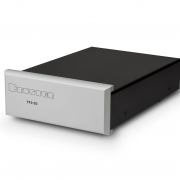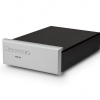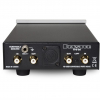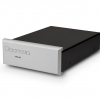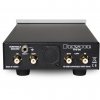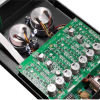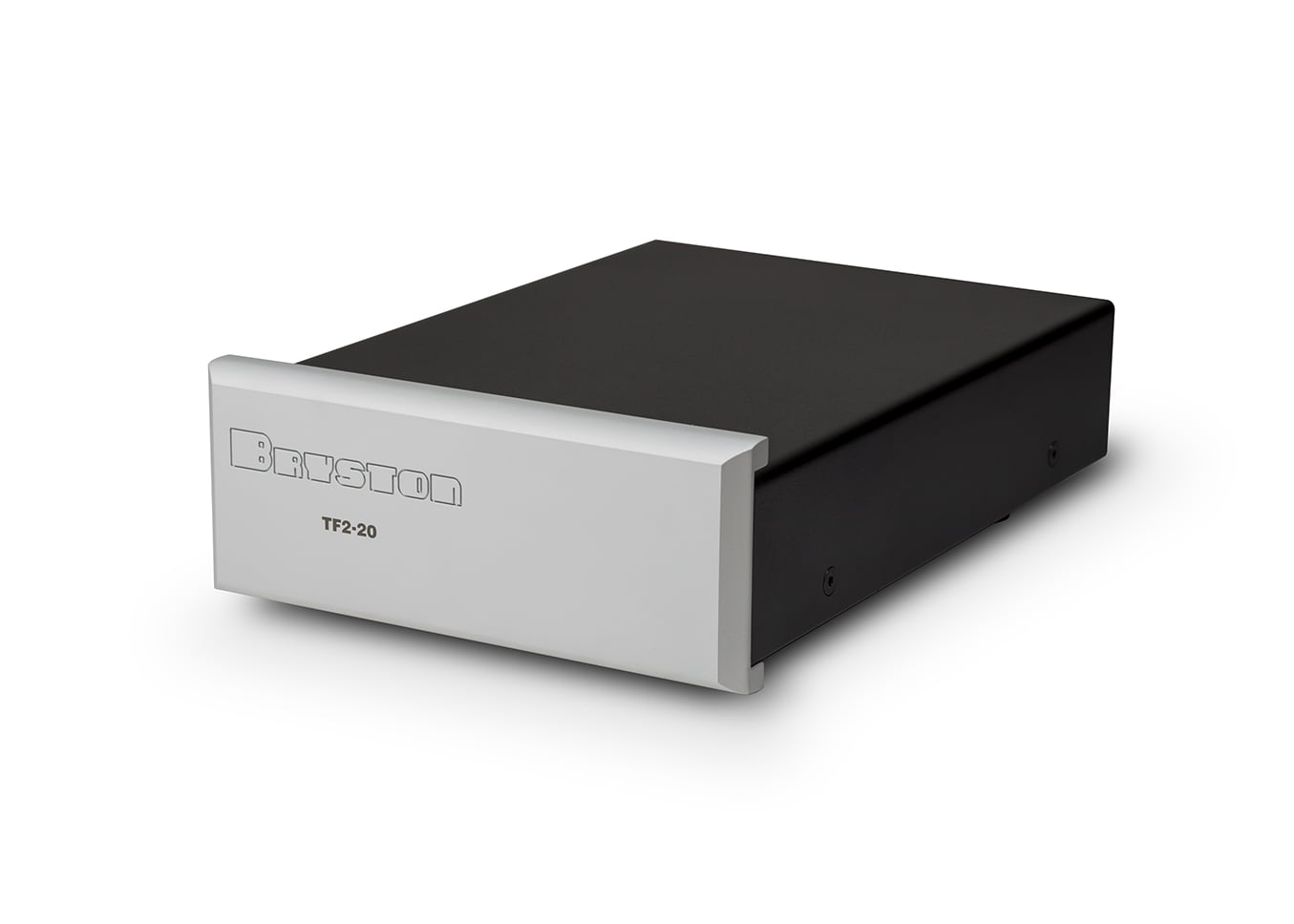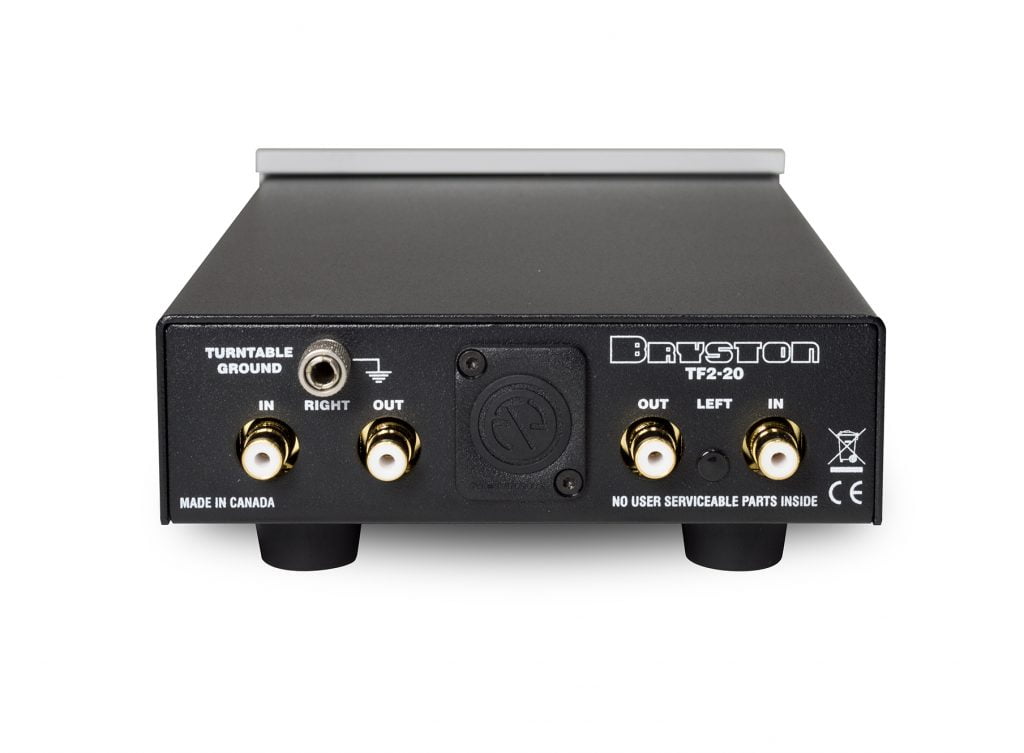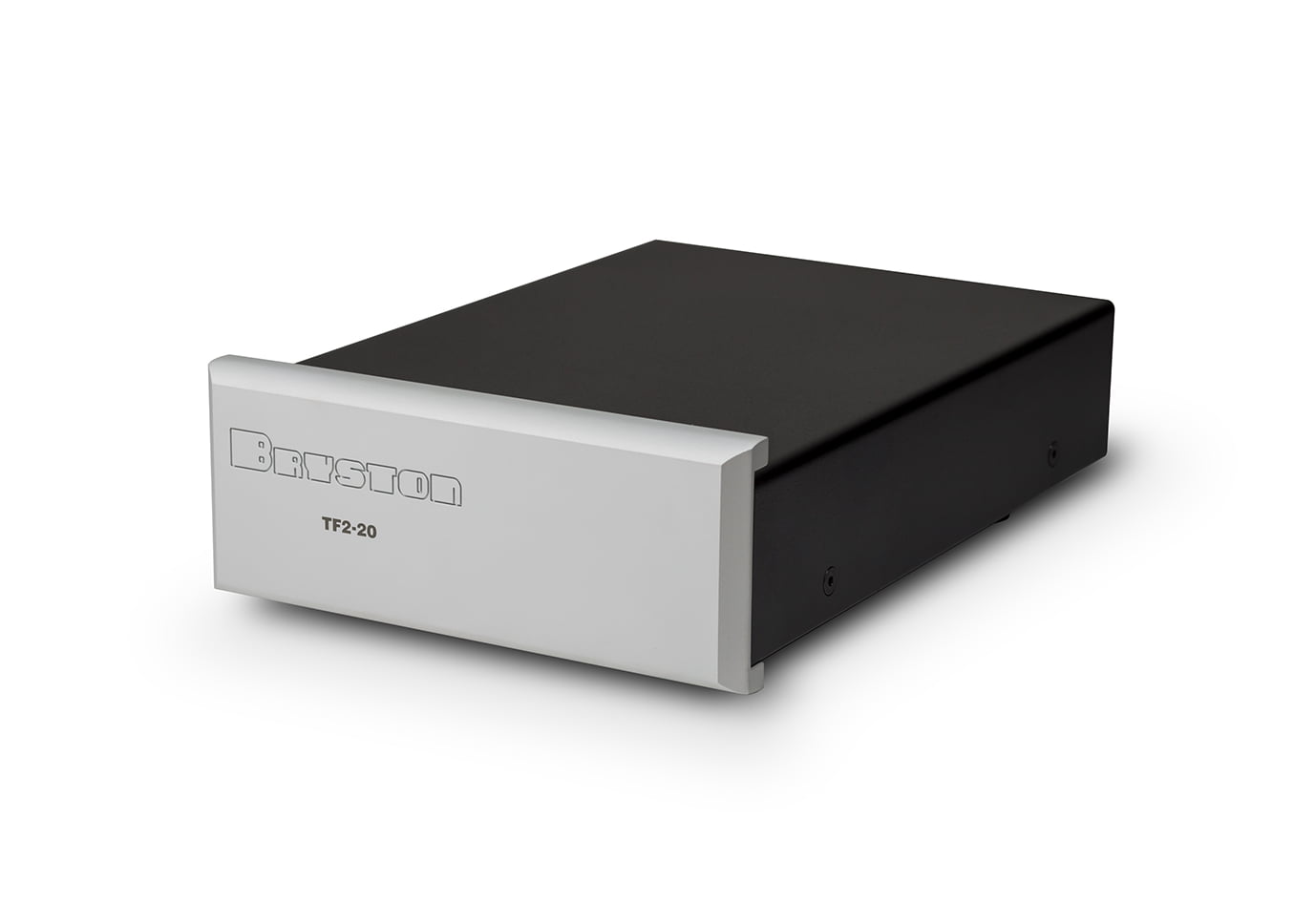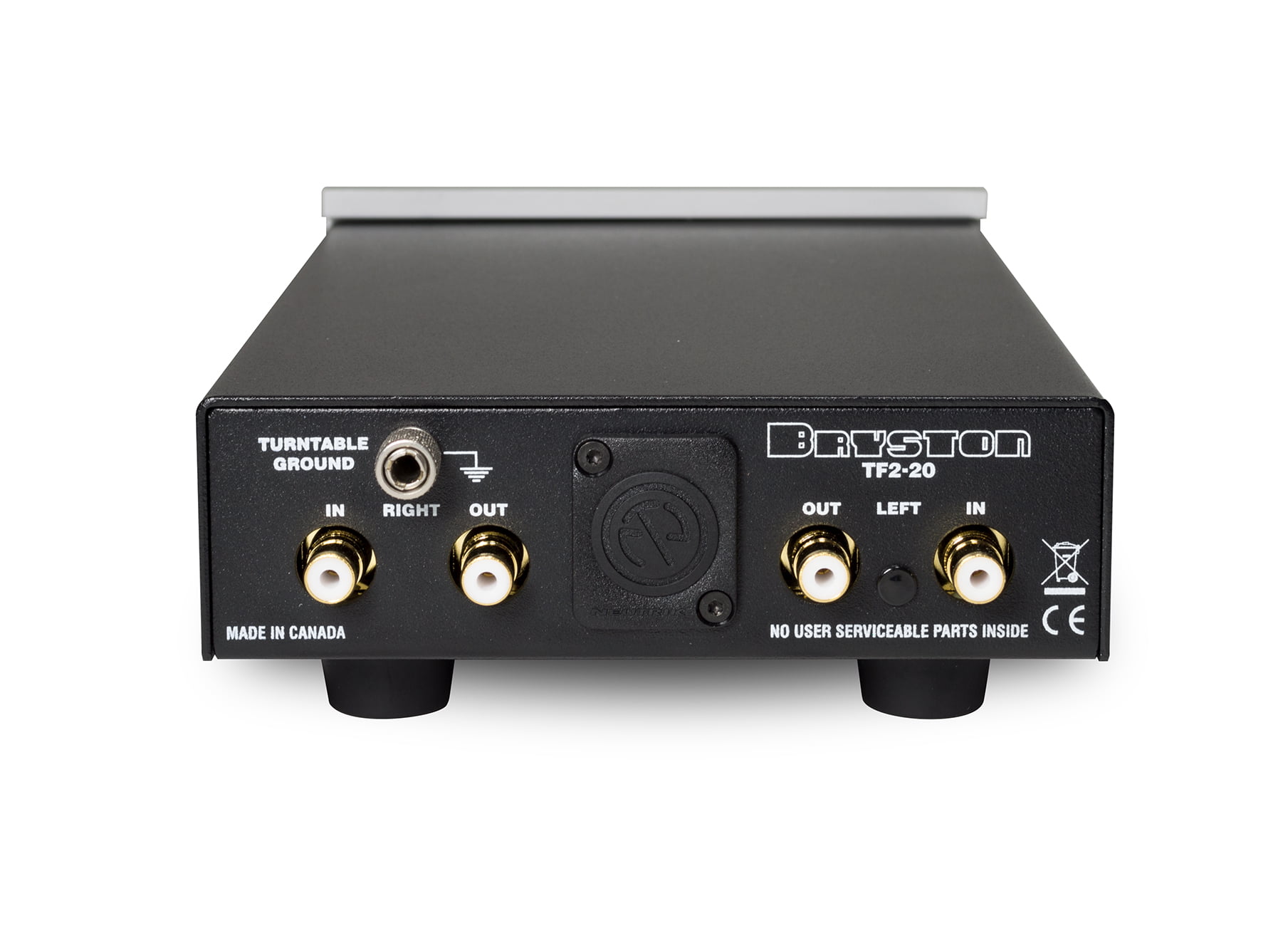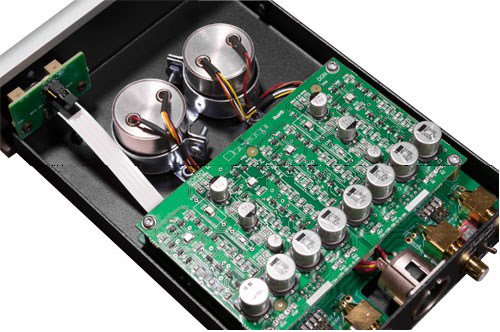- AUDIO ONE-TO-ONE Call Now: 210-805-9927
- Contact
- Register
- My Account
Bryston TF-2 Moving Coil Step-Up Transformer
Bryston TF-2 Moving Coil Step-Up Transformer
Bryston TF-2 Moving Coil Step-Up Transformer
Bryston TF-2 Moving Coil Step-Up Transformer
Description

Step-up transformers for Moving-Coil cartridges are the most esoteric and misun-derstood items in the world of hi-fi, and this partly ex-plains why they are so sel-dom used. This is a great shame because the use of a good MC transformer gives the best possible perfor-mance from a moving coil cartridge.
Moving–Coil cartridges have very little voltage output but significant current is availa-ble. So the MC transformer ‘transforms’ this small volt-age at the output of the MC to the required voltage re-quired by the Phono Stage in the preamplifier. It does this passively so no noise or dis-tortion is added resulting in a much better signal to noise ratio.
Operating Principle -
Moving magnet cartridges, as their name implies, contain magnets which are moved by the stylus’ cantilever, and the movement induces the signal voltage in fixed coils in close proximity to the magnets. In moving coil cartridges the roles are reversed, so now the magnets are fixed and the coils move.
The big advantage of moving coils is that the coils are much lighter (lower mass) than the magnets, so they are much more responsive to the mo-tion of the stylus. The big disadvantage is that the output voltage of moving coil cartridges is about 20dB lower than that of moving magnets, so an extra 20dB of gain is required. The extra gain can be provided by the phono-stage amplifier, by an external device called a head-amp, or by a transformer. The most commonly found solution is to increase the gain in the phono-stage itself, but in our opinion step-up transformers are still the best solution where ultimate per-formance is the objective.
Why a transformer at all? -
It used to be the case that a good signal-to-noise ratio was impossible to achieve from a moving coil cartridge without a step-up transformer. An extra 20 or 30 decibels of gain wasn’t a problem, but doing so with low noise using valves, transistors or op-amps was a problem. Modern tran-sistors and op-amps can now offer much better signal-to-noise ratios but valves still usually need transformers to work successfully with low output moving coil cartridges. An alternative to the step-up transformer is the head-amp (or pre-preamp). This is a transistor or op-amp amplifi-er which raises the output of moving coil cartridges up to moving magnet level.
Apart from the issue of a lower noise floor, the sound quality of transformers is something their advocates swear by. The distortion produced by audio transformers is of a completely different nature to that produced by a transistor amplifier. The harmonic distortion in trans-formers is greatest at the lowest frequencies and falls rapidly as the frequency rises, whereas in transistor amplifiers distortion more usually rises as the frequen-cy rises. More importantly, intermodulation distortion tends to be lower in transformers than it is in transistor amplifiers. The out-come is that although transformers aren't absolutely free of distortion (nothing is), the distortion is very benign compared to the distortion produced by many transistor amplifiers. This explains why the sound produced when a moving coil car-tridge is used with a good trans-former is so sublime and can cre-ate an open and spacious sound-stage with amazing separation between instruments.
The case against transformers is simply one of cost. Transistors can be as cheap as a few pennies (or less when bought in sufficient quantities) whereas transformers always cost a lot more, by as much as a factor of several thou-sand, due to the expensive mate-rials used in the core and the cost of the copper windings in terms of both material and labour.
Cartridge Loading -
Before considering how to match a moving coil cartridge with a transformer, it is worth-while considering the effects of different loads on moving coil cartridges. When any signal source is connected to any load impedance a potential divider is formed by the source's output impedance and the load imped-ance.
The usual rule for audio equip-ment in general is to feed the signal into a load at least ten times greater than the source impedance to avoid any signifi-cant signal loss, and this applies to moving coil cartridges as well.If the load impedance is 10 times greater than the source imped-ance the signal lost by the “pre-set volume control” is less than 1dB, ie nearly all the signal gener-ated by the source is available to the following amplifier. Any loss of signal at the source/load inter-face is usually considered a bad thing as it compromises the signal-to-noise ratio. More signal is lost, ie the pre-set volume control is turned down more, if the load impedance isn't significantly high-er than the source impedance.
When the source and load impedances are equal the signal loss is 6dB. When the source impedance is 9 times greater than the load impedance the signal loss is 20dB. Most modern moving coil car-tridges have a source impedance of about 10 ohms and the “load impedance ten times the source impedance” rule suggests 100 ohms is a good choice for load impedance and causes less than 1dB of signal loss. This is well in line with the recom-mendations from many cartridge manufacturers Anything above 100 ohms should be equally suit-able.
Does the cartridge's tonal balance change with load impedance? It certainly does if the cartridge is a moving magnet type, but low output moving coil cartridges are much less sensitive to changes in the load impedance. Users some-times claim that higher load im-pedances produce a brighter sound than lower ones, but car-tridge manufacturers tend be non-specific about recommended load impedances, often recom-mending a wide range or simply anything above a minimum im-pedance. The recommendation of Bryston is in line with most other cartridge manufacturers - that 100 ohms is a good value for most cartridges, and that the exact value is not critical as long as it is well above the cartridge's source impedance.
One thing is certain, and that is that the load impedance should not be equal to the cartridge's source impedance A step-up Moving-Coil transform-er is designed to accept the lower voltage output from the MC car-tridge and increase the voltage to a point which is acceptable to the input stage of the standard MM phono section.
The Bryston Moving Coil step-up transformer is available in two versions...with a 20dB or a 30dB gain option. Your choice on which unit is most appropriate will be determined by the voltage output of your chosen cartridge.
From .1 to .2 mV we would recommend the 30dB version
At .3 mV we would say either version would work fine
From .4 to .5 mV or more we would recommend the 20dB version
An important point to consider when choosing which Step-up to use is you do not want to over-power or under-power the MM phono stage. Underpowering results in not having enough GAIN in the system and overpowering can result in voltage overload and the resultant distortion.
The big mistake most often made when selecting a transformer for a moving coil cartridge is to over-look the voltage required at the phono stage's input and instead try to make the impedances match so that, for example, a cartridge with a 5 ohm source impedance sees a 5 ohm load at the transformer's input. This approach takes the cartridge's im-pedance as the most important factor when in reality it should be the cartridge's output voltage.
The use of modern rare earth magnets has resulted in most moving coil cartridges having a reasonably healthy output of around 0.4mV or 0.5mV whilst maintaining a low source imped-ance. This makes the signals they produce much easier to handle than the cartridges from 40 years ago (neodymium magnets weren't invented until 1983).
So the problems of yesteryear are thankfully not such a problem now.
Bryston TF-2 Moving Coil Step-Up Transformer
Description

Step-up transformers for Moving-Coil cartridges are the most esoteric and misun-derstood items in the world of hi-fi, and this partly ex-plains why they are so sel-dom used. This is a great shame because the use of a good MC transformer gives the best possible perfor-mance from a moving coil cartridge.
Moving–Coil cartridges have very little voltage output but significant current is availa-ble. So the MC transformer ‘transforms’ this small volt-age at the output of the MC to the required voltage re-quired by the Phono Stage in the preamplifier. It does this passively so no noise or dis-tortion is added resulting in a much better signal to noise ratio.
Operating Principle -
Moving magnet cartridges, as their name implies, contain magnets which are moved by the stylus’ cantilever, and the movement induces the signal voltage in fixed coils in close proximity to the magnets. In moving coil cartridges the roles are reversed, so now the magnets are fixed and the coils move.
The big advantage of moving coils is that the coils are much lighter (lower mass) than the magnets, so they are much more responsive to the mo-tion of the stylus. The big disadvantage is that the output voltage of moving coil cartridges is about 20dB lower than that of moving magnets, so an extra 20dB of gain is required. The extra gain can be provided by the phono-stage amplifier, by an external device called a head-amp, or by a transformer. The most commonly found solution is to increase the gain in the phono-stage itself, but in our opinion step-up transformers are still the best solution where ultimate per-formance is the objective.
Why a transformer at all? -
It used to be the case that a good signal-to-noise ratio was impossible to achieve from a moving coil cartridge without a step-up transformer. An extra 20 or 30 decibels of gain wasn’t a problem, but doing so with low noise using valves, transistors or op-amps was a problem. Modern tran-sistors and op-amps can now offer much better signal-to-noise ratios but valves still usually need transformers to work successfully with low output moving coil cartridges. An alternative to the step-up transformer is the head-amp (or pre-preamp). This is a transistor or op-amp amplifi-er which raises the output of moving coil cartridges up to moving magnet level.
Apart from the issue of a lower noise floor, the sound quality of transformers is something their advocates swear by. The distortion produced by audio transformers is of a completely different nature to that produced by a transistor amplifier. The harmonic distortion in trans-formers is greatest at the lowest frequencies and falls rapidly as the frequency rises, whereas in transistor amplifiers distortion more usually rises as the frequen-cy rises. More importantly, intermodulation distortion tends to be lower in transformers than it is in transistor amplifiers. The out-come is that although transformers aren't absolutely free of distortion (nothing is), the distortion is very benign compared to the distortion produced by many transistor amplifiers. This explains why the sound produced when a moving coil car-tridge is used with a good trans-former is so sublime and can cre-ate an open and spacious sound-stage with amazing separation between instruments.
The case against transformers is simply one of cost. Transistors can be as cheap as a few pennies (or less when bought in sufficient quantities) whereas transformers always cost a lot more, by as much as a factor of several thou-sand, due to the expensive mate-rials used in the core and the cost of the copper windings in terms of both material and labour.
Cartridge Loading -
Before considering how to match a moving coil cartridge with a transformer, it is worth-while considering the effects of different loads on moving coil cartridges. When any signal source is connected to any load impedance a potential divider is formed by the source's output impedance and the load imped-ance.
The usual rule for audio equip-ment in general is to feed the signal into a load at least ten times greater than the source impedance to avoid any signifi-cant signal loss, and this applies to moving coil cartridges as well.
If the load impedance is 10 times greater than the source imped-ance the signal lost by the “pre-set volume control” is less than 1dB, ie nearly all the signal gener-ated by the source is available to the following amplifier. Any loss of signal at the source/load inter-face is usually considered a bad thing as it compromises the signal-to-noise ratio. More signal is lost, ie the pre-set volume control is turned down more, if the load impedance isn't significantly high-er than the source impedance.
When the source and load impedances are equal the signal loss is 6dB. When the source impedance is 9 times greater than the load impedance the signal loss is 20dB. Most modern moving coil car-tridges have a source impedance of about 10 ohms and the “load impedance ten times the source impedance” rule suggests 100 ohms is a good choice for load impedance and causes less than 1dB of signal loss. This is well in line with the recom-mendations from many cartridge manufacturers Anything above 100 ohms should be equally suit-able.
Does the cartridge's tonal balance change with load impedance? It certainly does if the cartridge is a moving magnet type, but low output moving coil cartridges are much less sensitive to changes in the load impedance. Users some-times claim that higher load im-pedances produce a brighter sound than lower ones, but car-tridge manufacturers tend be non-specific about recommended load impedances, often recom-mending a wide range or simply anything above a minimum im-pedance. The recommendation of Bryston is in line with most other cartridge manufacturers - that 100 ohms is a good value for most cartridges, and that the exact value is not critical as long as it is well above the cartridge's source impedance.
One thing is certain, and that is that the load impedance should not be equal to the cartridge's source impedance A step-up Moving-Coil transform-er is designed to accept the lower voltage output from the MC car-tridge and increase the voltage to a point which is acceptable to the input stage of the standard MM phono section.
The Bryston Moving Coil step-up transformer is available in two versions...with a 20dB or a 30dB gain option. Your choice on which unit is most appropriate will be determined by the voltage output of your chosen cartridge.
From .1 to .2 mV we would recommend the 30dB version
At .3 mV we would say either version would work fine
From .4 to .5 mV or more we would recommend the 20dB version
An important point to consider when choosing which Step-up to use is you do not want to over-power or under-power the MM phono stage. Underpowering results in not having enough GAIN in the system and overpowering can result in voltage overload and the resultant distortion.
The big mistake most often made when selecting a transformer for a moving coil cartridge is to over-look the voltage required at the phono stage's input and instead try to make the impedances match so that, for example, a cartridge with a 5 ohm source impedance sees a 5 ohm load at the transformer's input. This approach takes the cartridge's im-pedance as the most important factor when in reality it should be the cartridge's output voltage.
The use of modern rare earth magnets has resulted in most moving coil cartridges having a reasonably healthy output of around 0.4mV or 0.5mV whilst maintaining a low source imped-ance. This makes the signals they produce much easier to handle than the cartridges from 40 years ago (neodymium magnets weren't invented until 1983).
So the problems of yesteryear are thankfully not such a problem now.


